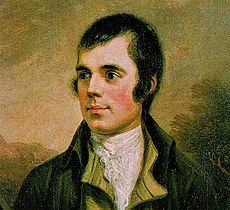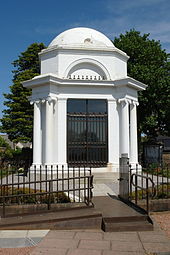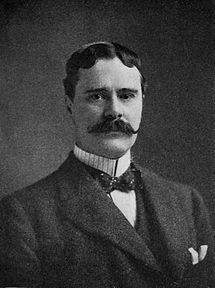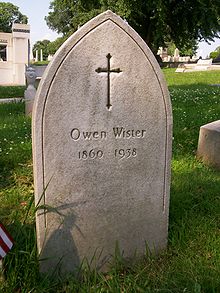 On this day in 1796, Scottish
On this day in 1796, Scottish  poet, lyricist and farmer, Rabbie Burns, Scotland’s favourite son, the Ploughman Poet, Robden of Solway Firth, the Bard of Ayrshire, The Bard, Robert Burns died in Dumfries, Scotland at the age of 37. Born Robert Burnes on 25 January 1759 near Ayr, in Alloway, South Ayrshire, Scotland. Widely regarded as the national poet of Scotland and celebrated worldwide, Burns is a cultural icon in Scotland. Burns collected folk songs from across Scotland, often revising or adapting them. His poem (and song) Auld Lang Syne is often sung at Hogmanay (the last day of the year), and Scots Wha Hae served for a long time as an unofficial national anthem of the country. Other poems and songs of Burns that remain well-known across the world today include; A Red, Red Rose; A Man’s A Man for A’ That; To a Louse; To a Mouse; The Battle of Sherramuir; Tam o’ Shanter, and Ae Fond Kiss. Burns was married to Jean Armour and romantically involved with Elizabeth Paton, Mary Campbell, Agnes Nancy McLehose and Jenny Clow.
poet, lyricist and farmer, Rabbie Burns, Scotland’s favourite son, the Ploughman Poet, Robden of Solway Firth, the Bard of Ayrshire, The Bard, Robert Burns died in Dumfries, Scotland at the age of 37. Born Robert Burnes on 25 January 1759 near Ayr, in Alloway, South Ayrshire, Scotland. Widely regarded as the national poet of Scotland and celebrated worldwide, Burns is a cultural icon in Scotland. Burns collected folk songs from across Scotland, often revising or adapting them. His poem (and song) Auld Lang Syne is often sung at Hogmanay (the last day of the year), and Scots Wha Hae served for a long time as an unofficial national anthem of the country. Other poems and songs of Burns that remain well-known across the world today include; A Red, Red Rose; A Man’s A Man for A’ That; To a Louse; To a Mouse; The Battle of Sherramuir; Tam o’ Shanter, and Ae Fond Kiss. Burns was married to Jean Armour and romantically involved with Elizabeth Paton, Mary Campbell, Agnes Nancy McLehose and Jenny Clow.
 The Final Footprint – Burns is entombed in the Burns Private Mausoleum at St. Michael’s Churchyard in Dumfries. His birthplace, Burns Cottage, is now a museum. Bronze statues in honour of Burns have been erected around the world including: Dorchester Square in Montreal, Quebec; Bernard Street in Leith, Scotland by David Watson Stevenson; Central Park, New York by Sir John Steell; in Dundee, Scotland; Thames Embankment Gardens in London; Dunedin, New Zealand; Union Terrace Gardens in Aberdeen by Henry Bain Smith; Allan Gardens, Toronto by Emanual Hahns; Stanley Park in Vancouver; Eglinton Country Park, North Ayrshire by Clement Wilson; Dumfries town centre. John Steinbeck apparently took the title of his novel Of Mice and Men (1937) from a line contained in the second-to-last stanza of To a Mouse: “The best laid schemes o’ mice an’ men / Gang aft agley“. When asked for the source of his greatest creative inspiration, singer songwriter Bob Dylan selected Burns’s 1794 song A Red, Red Rose, as the lyric that had the biggest effect on his life. The author J. D. Salinger used protagonist Holden Caulfield’s misinterpretation of Burns’ poem Comin’ Through the Rye as his title and a main interpretation of Holden’s grasping to his childhood in his 1951 novel The Catcher in the Rye. The poem, actually about a rendezvous, is thought by Holden to be about saving people from falling out of childhood. Burns became the “people’s poet” of Russia and became a symbol for the ordinary Russian people. Burns Night, effectively a second national day, is celebrated on 25 January with Burns suppers around the world, and is still more widely observed than the official national day, St. Andrew’s Day. The first Burns supper in The Mother Club in Greenock was held in 1802 and the format of Burns suppers has not changed since. The basic format starts with a general welcome and announcements, followed with the Selkirk Grace – Scots: “Some hae meat and canna eat, And some wad eat that want it, But we hae meat and we can eat, Sae let the Lord be thankit.” English: “Some have food and cannot eat, And some would eat that lack it, But we have food and we can eat, So let God be thanked.” After the grace, comes the piping and cutting of the haggis, where Burns’ famous Address To a Haggis is read and the haggis is cut open. The event usually allows for people to start eating just after the haggis is presented. This is when the reading called the “immortal memory”, an overview of Burns’ life and work, is given. The event usually concludes with the singing of Auld Lang Syne. From the last verse of Auld Lang Syne; “And there’s a hand my trusty friend ! And give us a hand o’ thine ! And we’ll take a right good-will draught, for auld lang syne!” and for Robert Burns!
The Final Footprint – Burns is entombed in the Burns Private Mausoleum at St. Michael’s Churchyard in Dumfries. His birthplace, Burns Cottage, is now a museum. Bronze statues in honour of Burns have been erected around the world including: Dorchester Square in Montreal, Quebec; Bernard Street in Leith, Scotland by David Watson Stevenson; Central Park, New York by Sir John Steell; in Dundee, Scotland; Thames Embankment Gardens in London; Dunedin, New Zealand; Union Terrace Gardens in Aberdeen by Henry Bain Smith; Allan Gardens, Toronto by Emanual Hahns; Stanley Park in Vancouver; Eglinton Country Park, North Ayrshire by Clement Wilson; Dumfries town centre. John Steinbeck apparently took the title of his novel Of Mice and Men (1937) from a line contained in the second-to-last stanza of To a Mouse: “The best laid schemes o’ mice an’ men / Gang aft agley“. When asked for the source of his greatest creative inspiration, singer songwriter Bob Dylan selected Burns’s 1794 song A Red, Red Rose, as the lyric that had the biggest effect on his life. The author J. D. Salinger used protagonist Holden Caulfield’s misinterpretation of Burns’ poem Comin’ Through the Rye as his title and a main interpretation of Holden’s grasping to his childhood in his 1951 novel The Catcher in the Rye. The poem, actually about a rendezvous, is thought by Holden to be about saving people from falling out of childhood. Burns became the “people’s poet” of Russia and became a symbol for the ordinary Russian people. Burns Night, effectively a second national day, is celebrated on 25 January with Burns suppers around the world, and is still more widely observed than the official national day, St. Andrew’s Day. The first Burns supper in The Mother Club in Greenock was held in 1802 and the format of Burns suppers has not changed since. The basic format starts with a general welcome and announcements, followed with the Selkirk Grace – Scots: “Some hae meat and canna eat, And some wad eat that want it, But we hae meat and we can eat, Sae let the Lord be thankit.” English: “Some have food and cannot eat, And some would eat that lack it, But we have food and we can eat, So let God be thanked.” After the grace, comes the piping and cutting of the haggis, where Burns’ famous Address To a Haggis is read and the haggis is cut open. The event usually allows for people to start eating just after the haggis is presented. This is when the reading called the “immortal memory”, an overview of Burns’ life and work, is given. The event usually concludes with the singing of Auld Lang Syne. From the last verse of Auld Lang Syne; “And there’s a hand my trusty friend ! And give us a hand o’ thine ! And we’ll take a right good-will draught, for auld lang syne!” and for Robert Burns!
 On this day in 1938, writer, “Father of Western Fiction”, Owen Wister died at his home in Saunderstown, Rhode Island at the age of 78. Born on 14 July 1860, in Germantown, a neighborhood in the northwestern part of Philadelphia. Perhaps best remembered for writing The Virginian (1902), a pioneering novel set in the Wild West describing the life of a cowboy on a cattle ranch in Wyoming. It was the first true western written, aside from short stories and pulp dime novels. In 1898, Wister married Mary Channing, his cousin. The couple had six children.
On this day in 1938, writer, “Father of Western Fiction”, Owen Wister died at his home in Saunderstown, Rhode Island at the age of 78. Born on 14 July 1860, in Germantown, a neighborhood in the northwestern part of Philadelphia. Perhaps best remembered for writing The Virginian (1902), a pioneering novel set in the Wild West describing the life of a cowboy on a cattle ranch in Wyoming. It was the first true western written, aside from short stories and pulp dime novels. In 1898, Wister married Mary Channing, his cousin. The couple had six children.
 The Final Footprint – Wister is interred in Laurel Hill Cemetery in Philadelphia. Just within the western boundary of the Grand Teton National Park in Wyoming, there is an 11,490-foot mountain named Mount Wister named in his honour. The Virginian has been made into four feature films, a television movie and a television series starring James Drury and Doug McClure.
The Final Footprint – Wister is interred in Laurel Hill Cemetery in Philadelphia. Just within the western boundary of the Grand Teton National Park in Wyoming, there is an 11,490-foot mountain named Mount Wister named in his honour. The Virginian has been made into four feature films, a television movie and a television series starring James Drury and Doug McClure.
#RIP #OTD in 1968 pioneer of modern dance, introducing eastern ideas into the art and paving the way for other women in dance, Ruth St. Denis died in Los Angeles aged 89. Forest Lawn Memorial Park Hollywood Hills
Have you planned yours yet!
Follow TFF on twitter @RIP

